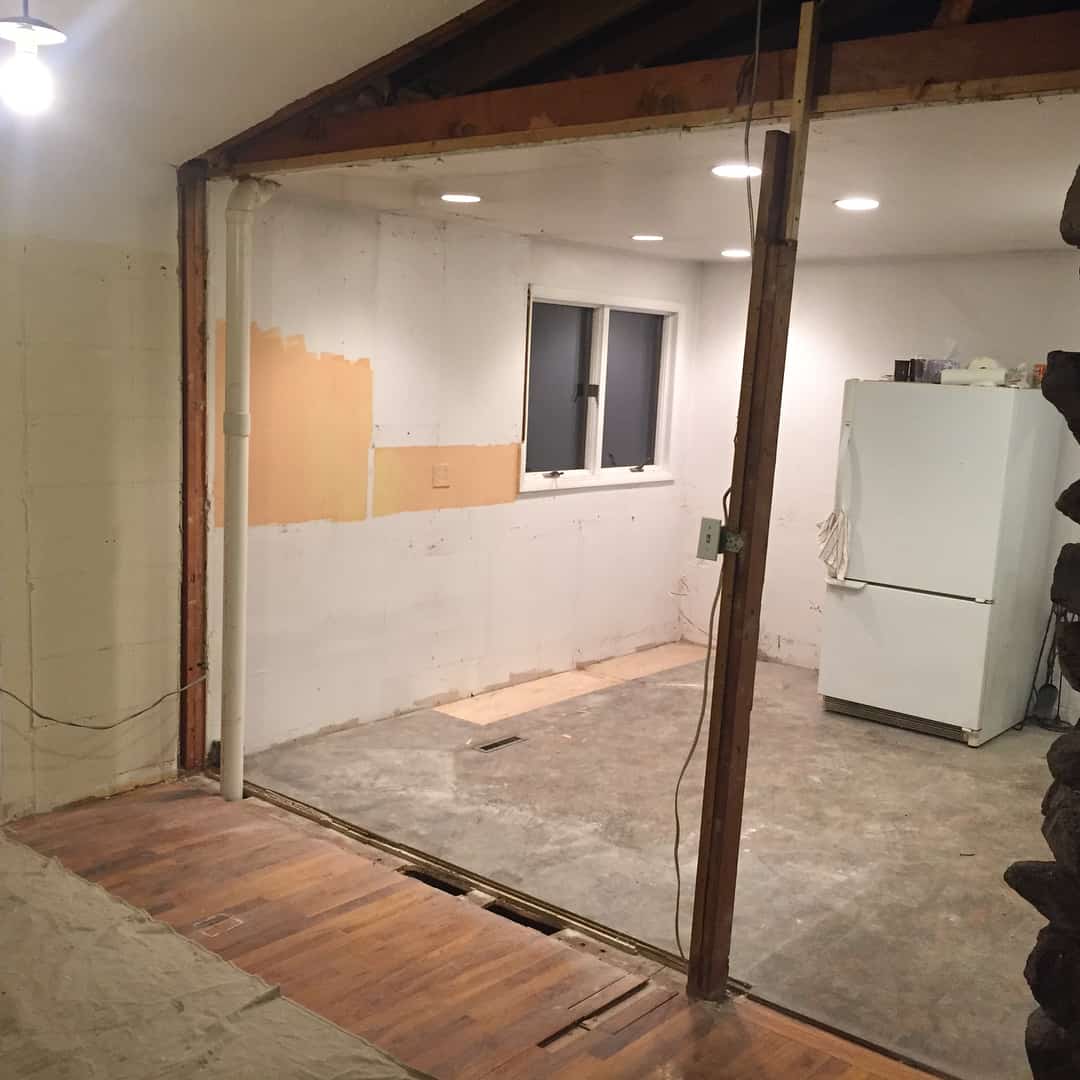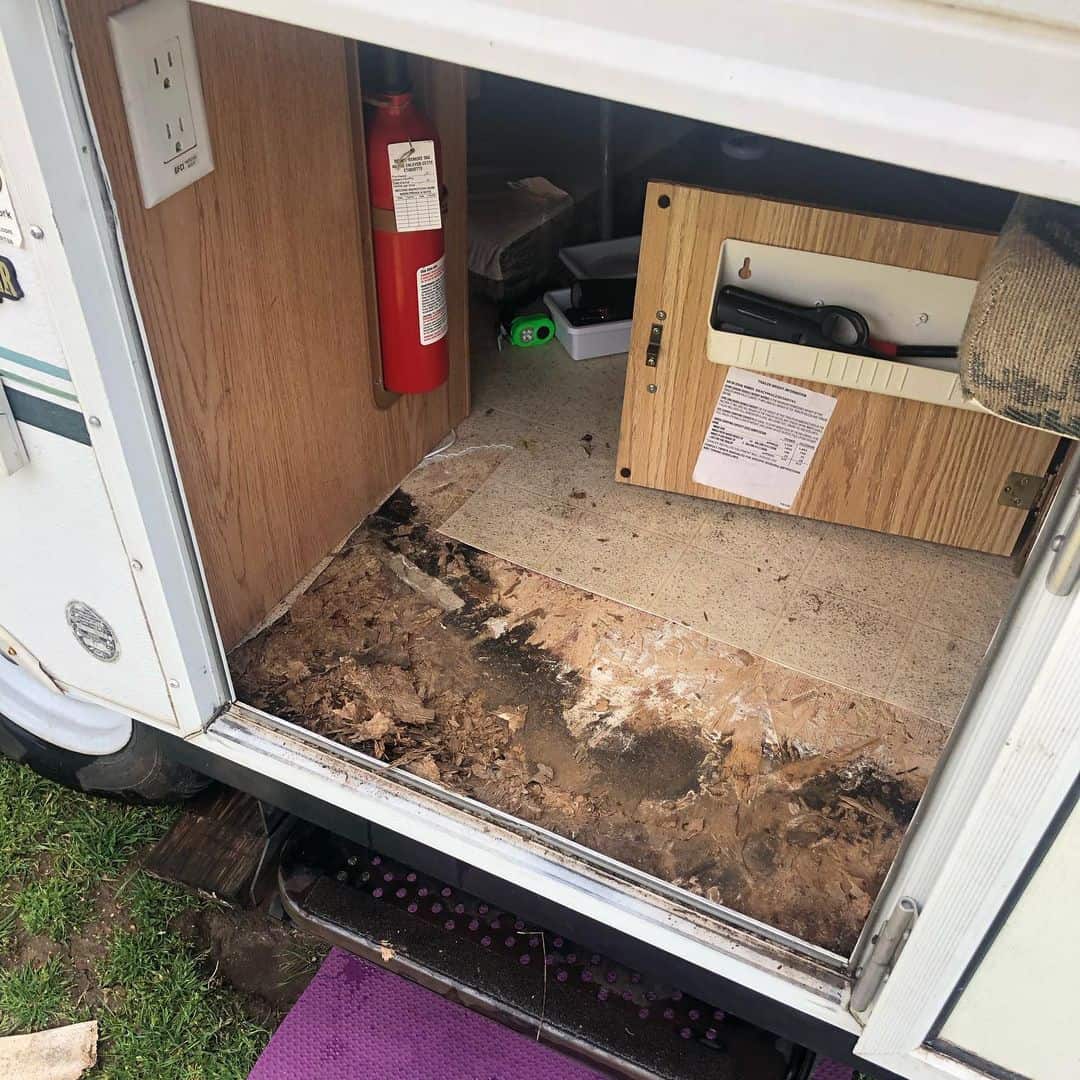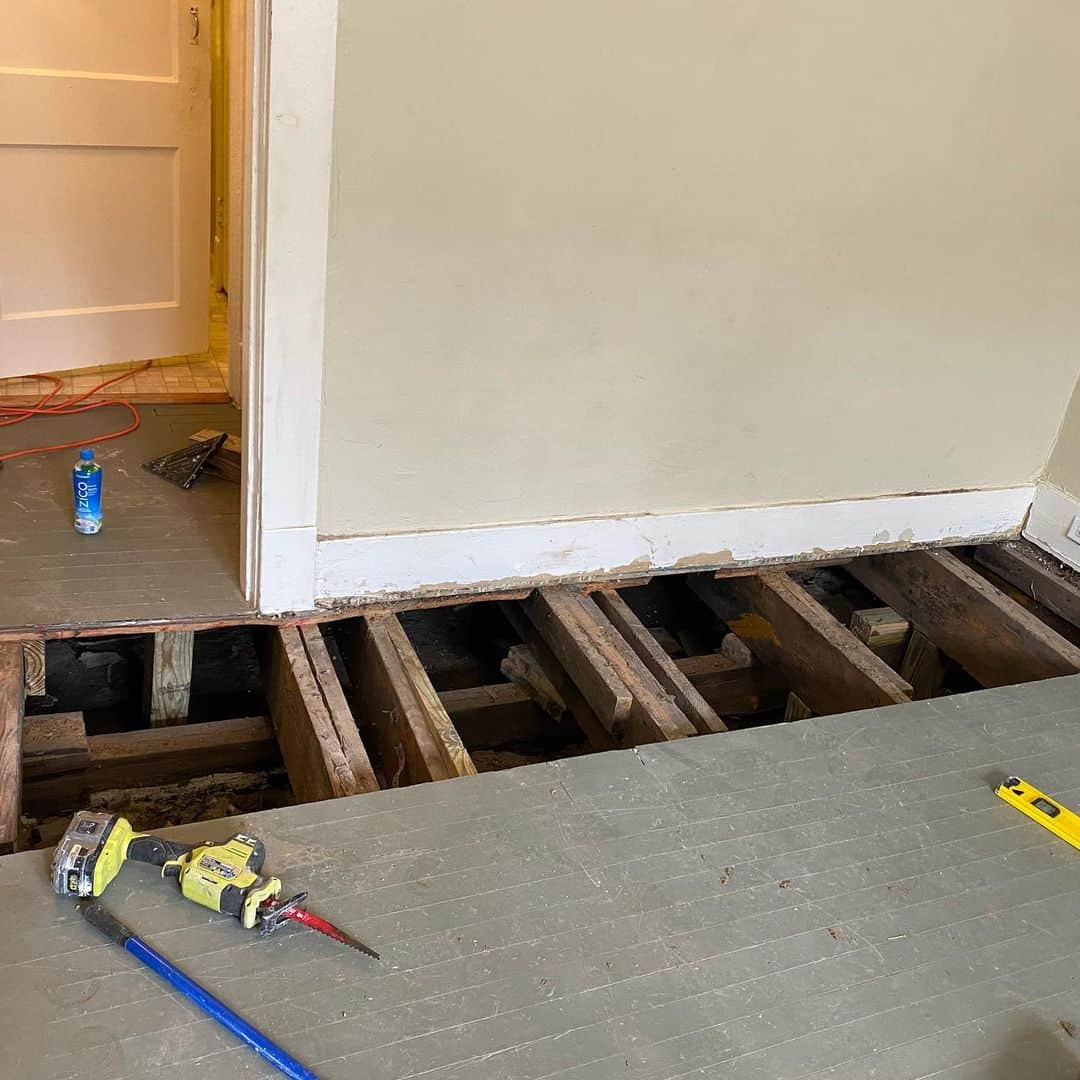Are you planning on putting in new subfloors or replacing your rotten and old subfloors? If so, you have come to the right place! Remodeling and renovating your house can be a very challenging and costly project.
Therefore, you should always research the materials or the budget you might need so you know in advance how and what to do! Regarding subfloors, the cost of removing or replacing them depends on several factors.
Those include the size of the room, materials, location, and labor costs. Subfloors are the crucial middle part of a flooring system, which offers a structurally flat surface ideal for holding underlayment and finish floor.
The usual subfloor repair cost ranges from $500 to $ 3,000, depending on the abovementioned factors. If you decide to make this a DIY project, the total cost will be around $500 for a single room.
Table of Contents
What Factors Influence The Cost?

1. Material
When discussing subfloor materials you can buy, there are different types you can choose from.
However, it is vital to know that some materials are a better match for certain rooms; for example, if you want to install subfloors in your basement, you will probably opt for moisture-resistant flooring.
On the other hand, it is unlikely that you will use the same material for your living room or dining room. As you can expect, different materials have different price ranges, features, and characteristics.
- Plywood
The most popular and cheapest subfloor material is plywood. Generally, the price for basic plywood subfloors is around $1.50 per square foot, meaning buying a 4-by-8-foot panel will cost around $39 to $49.
If you have a 306-square-foot room, the cost for subflooring will be around $459. However, if you need a specific type of plywood, such as fire retardant or pressure-treated, you will have to increase your budget.
For example, pressure-treated plywood costs around $90 per piece, meaning the average price is around $2.81 per square foot. When buying plywood, you should also consider the thickness, so if you need thicker plywood, that will also affect your budget.
The plywood sheets that are 1/4-inch thick cost between $6 to $45, depending on the panel size. On the other hand, a sheet with 11/32 is much more expensive and ranges from $15 to $120.
However, the most common thickness of plywood sheets is 3/4-inch.
- Advantech
If you want to make this a long-term investment, we suggest you acquire Advantech engineer wood subfloors. However, the prices of Advantech subfloors are on the higher end and cost between $4.25 and $9.25.
Advantech subfloors have numerous advantages over typical plywood subfloors; they are durable and moisture-resistant, which explains the price. However, remember that certain materials, even though they are of better quality, are not suited for specific rooms.
Therefore, if you are unsure what subfloor material you should buy, always contact a professional or a contractor and seek advice- you want the material that makes the most sense for the project and does break the bank!
- Other Materials
Besides the regular plywood and Advantech, there are other types of materials that you can purchase. For example, Amdry-insulated subflooring costs around $3 per square foot and is designed for concrete slab basements.
If you opt for Amdry subflooring, you will also have to purchase the connectors, which are generally inexpensive.
On the other hand, Barricade costs between $1.175 to $2.25 per square foot and have diverse application- they are used for sound dampening and floor heating.
You can also purchase DRIcore subfloors, which cost around $2.50 per square foot. These DRIcore subfloors are increasingly becoming popular, and they are made of a hard plastic base and a layer of strand board (OSB)- think stripes of wood glued by wax and resin.
DRICore subfloors are an excellent choice for bathrooms because they are moisture-resistant.
2. Room Size
Besides the material, the second most crucial factor you must consider is the room size. Depending on the size of your room and the price of the material that you choose, you can calculate how big of a budget you need.
The average cost ranges between $1.30 to $12 per square foot, depending on the subfloor material type. For example, if you want to replace subfloors in a small bedroom or bathroom, it will cost you around $336.
On the other hand, replacing subfloors in your basement is a high-cost project because the contractors will have to replace the concrete slab.
Depending on the size of your basement and the type of material (moisture-resistant), that can cost between $2,250 to $18,000, including labor costs.
For example, replacing subfloors in a 1,500-square-foot basement can cost you between $10,00 to $18,000. To sum up, the larger the room, the higher the cost.
3. Location
As mentioned, the location plays a vital role in the total cost of replacing subfloors because certain rooms and areas call for specific materials, such as a basement or a bathroom.
- Bedroom and Living Room
If you want a subfloor replacement for your 224 -square feet bedroom, expect to pay around $336. Similarly, a 220-square feet living room can cost you around $330.
- Kitchen
Installing or replacing subfloors in your kitchen depends on the size- for a 175-200-square feet kitchen, expect to pay between $263 and $300.
- Bathroom
The replacement cost for a 115-220 square feet bathroom ranges between $173 and $330.
- Mobile home
The estimate for replacing the subfloor in your mobile home ranges between $2 and $2.75 per square foot.
If you want to calculate the replacement cost for a specific room, click here.
4. Installation and Labor Costs

The price for installation or labor costs are significant because half of the budget will be spent on it unless you opt for a DIY project. The average rate for replacing and installing subfloors that you can expect from a contractor is between $25 to $30 per hour.
If you are wondering how long the replacement and installation process lasts, it can last around 4 hours for a smaller room or area. If you have ample square footage and the project is a bit challenging, that can last up to 4 or 5 five days.
When replacing floors, you need to calculate that the installer needs first to remove the previous subfloors and prepare the area for installing the new one. In addition, they need to clear and clean the workspace so you can add furniture.
If you have experience replacing subfloors, you can save money by doing prep work.
What Is The Difference Between The Cost Of Replacement And Repair?
Whether you should replace or repair your subflooring system depends on its current state. If it has sustained a lot of water damage or rotting, that is your clue to replace it rather than repair it.
However, if the majority of the subfloor is in good shape, you can consider repairing it. The best choice would be to contact a contractor so that he can estimate the damage and the state of the subfloors.
Repair costs for water-damaged subfloors can range from $1.66 to $5 per square foot.
Comparing these prices to the subfloor replacement cost, repairing it is significantly less expensive if a smaller subfloor area is damaged.
Furthermore, expect to pay more for the removal of old subflooring.
FAQ

1. How much does the sagging floor repair cost?
The most common cause of sagging floors is water damage, which also causes them to smell. When it comes to the repair cost of sagging floors, it ranges from $1,000 to $10,000, while the labor cost can range between $75 to $125.
The repair cost depends on the type of flooring, the extent of the damage, and the cause of the damage.
2. How much is floor joist repair?
In most cases, when homeowners have to replace subfloors, the floor joists also must be replaced. Floor joists are a key component in home construction, and they support and enclose a flooring system or a ceiling.
Replacement or installation of the floor joints depends on the area you need to enclose and support- these long beams of wood usually cost between $100 to $2,000 each.
The best clue you need to replace your floor joists is if they are rotten or have sustained a lot of moisture damage. Floor joists are an integral part of any construction, and therefore you need to make sure that they are installed correctly and can provide good support.
3. What is the difference between subfloors and underlayment?
If you are confused about the difference between subfloors and underlayment, the subfloors are the middle layer. In contrast, the underlayment is not a structural part; its purpose is to provide a smooth surface on which the finish floors sit.
Conclusion
As mentioned, the complete subfloor replacement or installation cost depends on four crucial factors: the size of the room, location, labor costs, and material.
Although you might be tempted to make this a DIY project, we suggest hiring a contractor for this job unless you have tremendous confidence in your skills.
Replacing and installing subfloors is a very intricate and complex job that should be left to the professionals. Ultimately, if you try to do it yourself, you may do a lot of damage to repair and install correctly, which will cost you even more.
Do you need to replace your subfloors? Please, share your experience with us! If you have any questions, do not hesitate to ask!